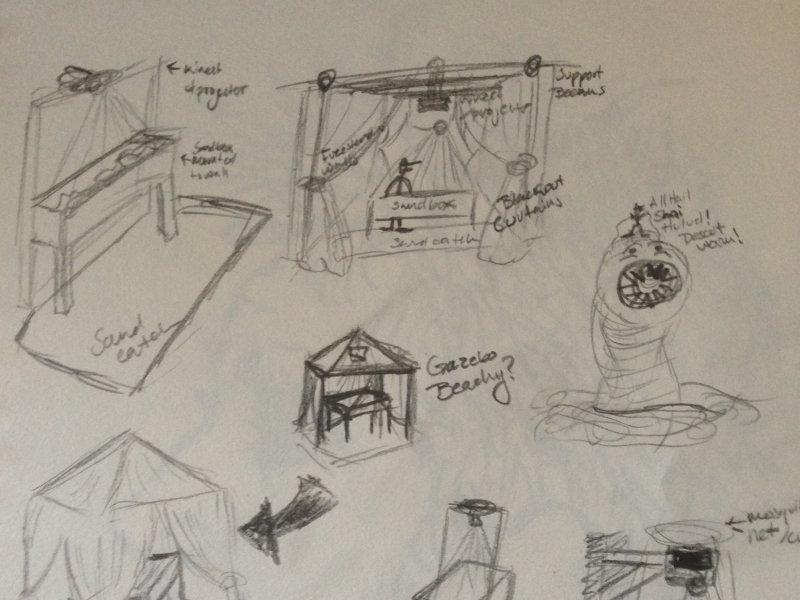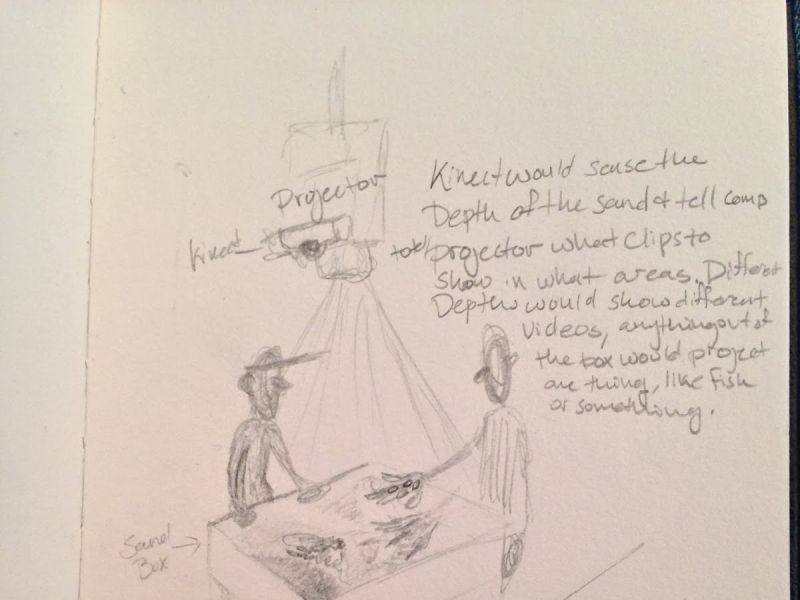Thesis Proposal Paper, Technophobia

The following contains my Essay on the problem that I want to tackle with my thesis. I want to take on the problem of technophobia, and see if I can use design to start trying to help ease it off of the people that are afflicted by it. My annotated bibliography follows my paper, citing useful information that I plan to use as I pursue my project. I feel that it successfully argues the necessity of research into what I propose, and perhaps will make my idea for tackling it seem logical.
Technophobia
As a college bum living at home with my parents majoring in a degree that relates to computers, I’ve discovered that I have been awarded the task of being the Tech girl. I’ll “hack” into email accounts (Mom, your caps lock was on again) and fix the majority of computer problems that arise (try turning it off and on again). The focus of my somewhat glorified talents, however, generally falls to using Google. As ludicrous as it may seem, my family literally calls it “the gift” when I Google something for them.
The “tech-savvy” things that I do around the house are clearly not that hard to figure out, and I don’t mind doing them because it makes me seem like a genius half the time. Despite my exorbitantly inflated ego, however, I find myself wondering why they won’t learn how to do these things themselves. When I asked, they claimed laziness; they felt that it was easier to make me do it because they would “mess something up.” The fact that they think they can mess up something like Google is mind-boggling. The saddest part is that I’m certain this situation is not entirely unique to me. Everyone has that tech-inept friend or relative that doesn’t keep up with technology. Sometimes it’s because they don’t have time to learn it, other times it’s that they’re afraid of ruining their devices. The excuses people make are generally reasonable. Sequestering themselves away from the advantages gained from technology, however, is slightly less than reasonable. It’s crippling, in fact, because this enormous database of information filled with anything they want to know and everything they ever could drifts entirely out of their reach. These people have technophobia, and it’s unfortunate that they find digital tools so intimidating.
So what causes technophobia? The presence of technology is obviously a requirement, but what about that presence do some people find intimidating? Technophobia is essentially an anxiety caused by the presence of technology, and appears to correlate with past failure or stories of the failure of others. This is an example of conditioned fear, and “is regarded as the primary mechanism underlying many anxiety disorders” (Ducal). Of course, it is important to remember that technophobia is not necessarily a fear like other phobias, and is represented more in the form of a discomfort or unfamiliarity with technology than hysterical anxiety (Weil et. All). Despite this, it should be entirely possible to try and treat this in the same way that psychologists treat phobias, and that is through exposure to the thing that causes fear via an environment that helps the subject realize it is not threatening, also known as Fear Extinction (Wellman et. All, Ducal). Through design, it should be possible to create a digital environment that is non-threatening to the subject, one that immerses the subject in the digital experience and alleviates the threat of “messing it up” by being virtually impossible to ruin.
Allan Kay, the creator of the concept of Dynabooks and a large part of computing as we know it today, believed that people would insist on learning technology, on owning their tech and expanding on it, personalizing it so that it suited their own needs. The Dynabook, in essence, was a small, personal computer, approximately the size of a sheet of paper, which could access any information that one could possibly hope to harness. He created an interim version of it that was roughly the size of a desk, and expected it to be programmed extensively by anyone that became an owner of a dynabook. In fact, he expected children to be among the first to learn how to program, simply for the impatience they would experience when it worked the way someone else wanted it to rather than the way they would want it to (Montfort, The New Media Reader). Kay knew that to make this appealing, however, it couldn’t just be for learning purposes. He made it into something that you could draw with, and play with, because in a way he must have known that there would be an aversion to the new technology if it did not have a fun aspect to it. Of course, the aversion proved greater than he must have expected, because people inevitably fell into the belief that programming, and computing in general, were far too complex of ideas to learn for themselves.
This aversion to technology is no new problem, obviously. Ever since the very first computer there has been speculation and distrust aimed toward the possibilities that technology entails. Creative artist Nam June Paik was perhaps one of the first to realize that the advent of computers coming into our lives, or what Norbert Wiener called cybernetics, would need a therapeutic outlet in order to make it bearable (Montfort). He believed that people created art about the things that control their lives because it was the best way to deal with them. In the same way that Louis Pasteur would cure diseases like rabies with vaccinations derived from rabies, Paik believed the best way to cope with the new problem of cybernetics was art that was derived from cybernetics. He became a major figure in cybernated art, making pieces like “TV Bra for Living Sculpture” which consisted of a bra constructed out of televisions being worn by a performing cellist, attempting to bridge the gap between human and computer by integrating one of the more intimate items a person could wear with technology (Fogel). I would agree that this project had some merit; it makes sense that coupling something wild and new with something natural and pure would help repave former associations with a specific medium.
Paik did a lot to help assimilate our culture into the technological world, but just one artist is not enough to provide the mental convalescence for an entire culture. Though the work that he provided will be relevant for a long time to come, there is so much space to be explored in the subject of technology and the many facets that make it extraordinarily difficult, but mesmerizing all the same. Time keeps changing, evolving and surprising us at every turn. The beautiful and perhaps frightening thing about technology is that, much like time, it is ever changing, and it will likely never slow down. Keeping up with technology will always be a problem, and the only perceivable way to endure this problem is to force ourselves to adapt along with it (Bennett).
If design could remove the threat of mistakes, if it could be crafted in such a way that it would never fail, then it follows that over time it would cause the subjects that come into contact with fail-free technology to become conditioned to realize they can interact with technology and enjoy moderate success (Ducal). When creating technology, when we move it forward, we have to keep the users in mind, or large quantities of individuals will get left behind. We need to give users the courage to learn our technology, and aid them in realizing how simple learning a new task can be. Change is inevitable, and we have to try to open the users up to that concept.
As designers, we must find a way to reel in our audience, and at times make sure that they are still following along. Simply creating a program that is user-friendly is not entirely enough for this daunting task. In order to solve this problem of technological aversion, it is necessary that we first address the problem of perceived difficulty. Through design, we must remove the idea of the probability of failure, reassuring the users that they will not meet with frustration or failure during the process of interaction with technology. The solution should be cognitive, and correlate with ideas that the subject will be familiar with. It should be immediately obvious how they are expected to interact with the piece, so much so that the technology itself disappears (Curiosity). The solution would benefit from being perceived as fun, as this would be a great motivator for the subjects to attempt to interact with something that they may initially feel intimidated by, though if the technology itself is implemented well enough, and if the method with which the piece is interacted with seem simple, the subject should not feel intimidated by the piece.
Creating a piece that is conducive to changing people’s perceptions of their own limitations, helping them realize their own technological potential, how much they can personally achieve with technology, that is what my thesis is about.
Annotated Bibliography
“How Tech-savvy Are You? Fear of Technology Affects More People than Arachnophobia.” Mirror. N.p., n.d. Web. 09 Dec. 2013. <http://www.mirror.co.uk/money/you-tech-savvy-fear-technology-affects-2042470>.
Apparently technophobia effects more people than arachnophobia.
Barry, Chris, Kieran Conboy, Michael Lang, Gregory Wojtkowski, and Wita Wojtkowski. Information Systems Development: Challenges in Practice, Theory, and Education. New York: Springer, 2009. Print. Pages 117-128
Article with studies of technophobia across gender, age, and schooling. Some statistics. Talks about involving technophobics in the process of making changes to tech as a solution to help them cope.
Bennett, Dashiell. “What To Do When Technology Passes You By.” Gizmodo. Gawker Media, n.d. Web. 09 Dec. 2013. <http://gizmodo.com/5577652/what-to-do-when-technology-passes-you-by>.
Voiced frustration of falling behind the times, what to do to keep up
Burbank, Luke. “How Smart Technology Can Make Us Dumb.” CBSNews.com. CBS Interactive Inc, n.d. Web. 9 Dec. 2013. <http://www.cbsnews.com/news/how-smart-technology-can-make-us-dumb/>.
Distress on the over coddling received from technology, how he deals with it
Burley, Kermit. “User Frustration With Technology in the Workplace.” Small Business. Demand Media, n.d. Web. 09 Dec. 2013. <http://smallbusiness.chron.com/user-frustration-technology-workplace-16617.html>.
Examples of people that are pretty much done with the constant changing of the workplace/ the programs that they have to learn
Curiosity. Perf. Lama Nachman. Discovery Channel. Discovery Channel Incorporated, n.d. Web. 09 Dec. 2013. <http://dsc.discovery.com/tv-shows/curiosity/topics/lama-nachman-on-technology-frustrations.htm>.
“The best thing technology can do is disappear” lots of stuff on tech and it’s frustrations/advantages
“Dealing With The Technophobic.” Www.mcmcse.com. MC MCSE, n.d. Web. 09 Dec. 2013. <http://www.mcmcse.com/articles/technophobia.shtml>.
Felty, Lora. “The Joys and Frustrations of Technology.” VisionAware. American Foundation for the Blind, 9 Apr. 2013. Web. 09 Dec. 2013. <http://www.visionaware.org/blog.aspx?BlogID=13>.
Talks about her aversion to updating to any new operating system. Also talks about the joy of being able to set up an IPhone herself, without assistance, even though she’s blind.
Dubuc, Bruno. “THE BRAIN FROM TOP TO BOTTOM.” Thebrain.Mcgill.ca. Canadian Institute of Health Research, n.d. Web. 10 Dec. 2013. <http://thebrain.mcgill.ca/flash/a/a_08/a_08_cr/a_08_cr_anx/a_08_cr_anx.html>.
Explanation of getting rid of fear via repeated exposure to the object that is feared.
Fogel, Douglas. “The Shock of the View.” WalkerArtCenter.com. Walker Art Center, n.d. Web. 10 Dec. 2013. <http://www.walkerart.org/archive/5/B85391323C41DD836167.htm>.
About Nam June Paik’s television bra piece
Kac, Eduardo. “Satellite Art: An Interview with Nam June Paik.” SATELLITE ART: AN INTERVEW WITH NAM JUNE PAIK. O Globo, 10 July 1988. Web. 09 Dec. 2013. <http://ekac.org/paik.interview.html>.
introspective of Paik, his definitions of art and it’s purpose in relation to technology
Havelka, Douglas, Fred Beasley, and Travis Broome. “A Study of Computer Anxiety Among Business Students.” American Journal of Business » Blog Archive ». Ball State University, n.d. Web. 10 Dec. 2013. <http://www.bsu.edu/mcobwin/ajb/?p=128>.
Study of computer-related anxiety amongst business majors
Law, Dine, P.L. “Dealing With Tech Frustrations.” Law Technology Today. American Bar Associtation, 2 Dec. 2013. Web. 09 Dec. 2013. <http://www.lawtechnologytoday.org/2013/12/dealing-with-tech-frustrations/>.
Documentation of people fed up with technology, suggestions on how to cope
Mckay, Brett, and Kate Mckay. “How and Why to Become a Lifelong Learner.” TheArtofManliness.com. The Art of Manliness, n.d. Web. 10 Dec. 2013. <http://www.artofmanliness.com/2013/03/18/how-and-why-to-become-a-lifelong-learner/>.
Reasons why not to stop learning
Montfort, Nick, and Noah Wardrip-Fruin. The New Media Reader. Cambridge, Mass. [u.a.: MIT, 2003. Print.
Very Useful in its talk of cybernetic art, the origin of computers, how they relate to us, how we deal with them, etc.
Shankar, Vishwanash. “Dealing with Technophobia Among Learners.” Articlesbase.com. Articlesbase.com, 20 Feb. 2007. Web. 09 Dec. 2013. <http://www.articlesbase.com/e-learning-articles/dealing-with-technophobia-among-learners-107071.html>.
Ways to get people to accept tech, interesting in-depth analysis of how to gradually ease people into it.
“The Psychological Impact of Technology from a Global Perspective: A Study of Technological Sophistication and Technophobia in University Students from Twenty-three Countries.” The Psychological Impact of Technology from a Global Perspective: A Study of Technological Sophistication and Technophobia in University Students from Twenty-three Countries. N.p., n.d. Web. 09 Dec. 2013. <http://www.sciencedirect.com/science/article/pii/074756329400026E>.
May be useful later, wanna read whole article
Watson, Tom. “Technology And Society’s Most Intractable Problems: When Innovation Makes A Difference.” Forbes. Forbes Magazine, 24 Oct. 2013. Web. 09 Dec. 2013. <http://www.forbes.com/sites/tomwatson/2013/10/24/technology-and-societys-most-intractable-problems-when-innovation-makes-a-difference/>.
Example of something that technology is doing to make the world better
Weil, Michelle M., and Larry D. Rosen. “Byting Back: Is Technophobia Keeping You Off the Internet?” Interview by Wendy Rickard Bollentin. OnTheInternet Magazine Interview. The Internet Society, July-Aug. 1995. Web. 09 Dec. 2013. <http://www.csudh.edu/psych/OTI.htm>.
Interview with two Psychologists about the fear of technology that was rising at the time.
Wellman, C. L., A. Izquierdo, J. E. Garrett, K. P. Martin, J. Carroll, R. Millstein, K. P. Lesch, D. L. Murphy, and A. Holmes. “Impaired Stress-Coping and Fear Extinction and Abnormal Corticolimbic Morphology in Serotonin Transporter Knock-Out Mice.” Www.iub.edu. The Journal of Neuroscience, n.d. Web. <http://www.iub.edu/~caralab/pubs/Wellman%20et%20al%202007.pdf>.
Mice were forced to swim to test their extinction recall based on breed of mice. Despair of mice lessened when exposed again, because they realized they might not die. Taking away the ability to fail in the experience of this sandbox may help people fear technology less in the same way.
Wolfe, Amanda. “How One Woman Went from Tech-Scared to Tech-Savvy.” LHJ.com. Real Girls Network, n.d. Web. 09 Dec. 2013. <http://www.lhj.com/relationships/work/worklife-balance/tech-scared-to-tech-savvy/>.
Story of someone getting over computer affliction



